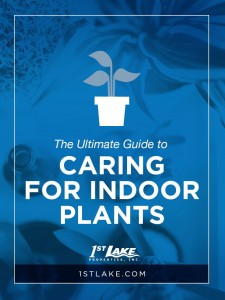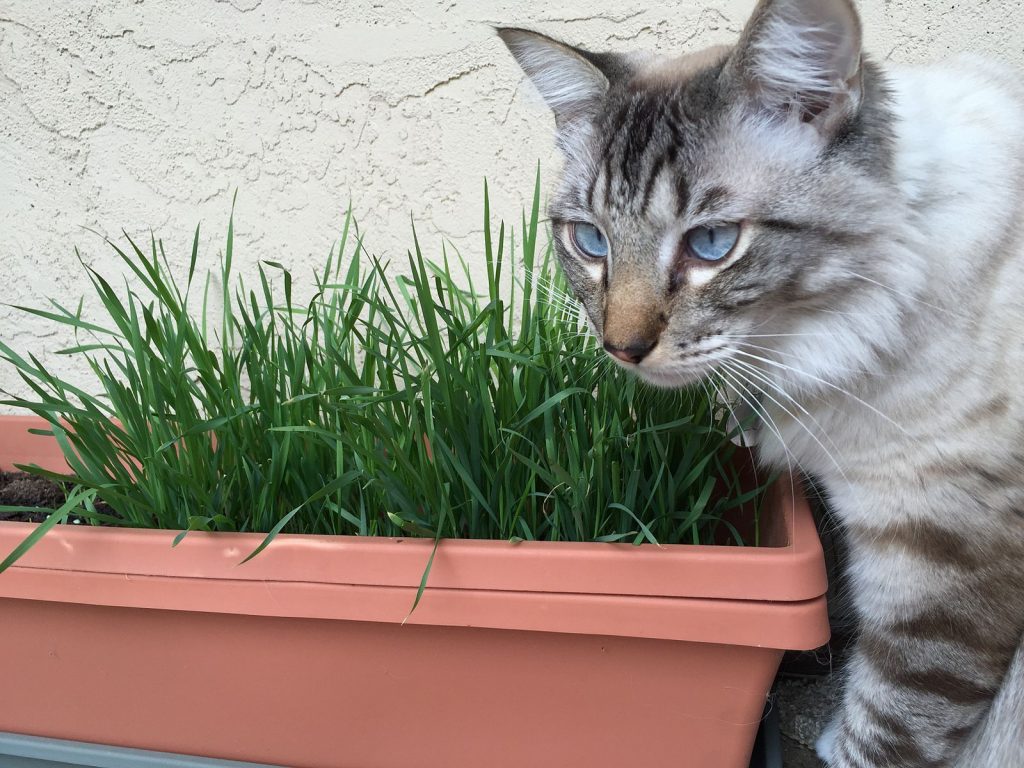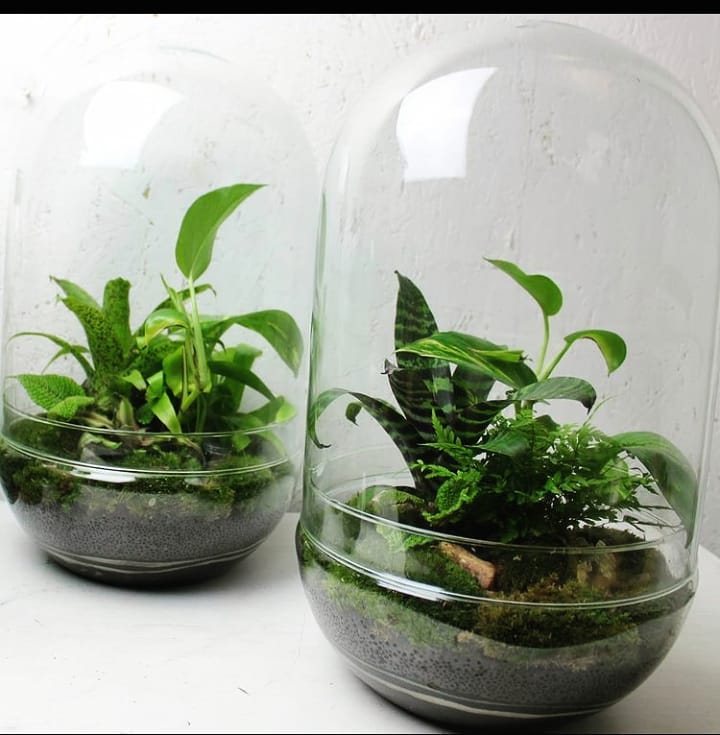
 Foliage in your apartment can really make a space feel fresh and with the right indoor plants, you can literally purify the air in your home.
Foliage in your apartment can really make a space feel fresh and with the right indoor plants, you can literally purify the air in your home.
A little greenery can make a big impact and brighten up the room, but caring for houseplants can be tricky. After all, they are living, breathing beings, and each one is different.
These tips can help you approach the task responsibly so that you can enjoy beautiful indoor plants in your apartment for years to come.
Different plants have different needs, and some plants are better for indoors than others. Some plants that tend to flourish in apartments include Cast Iron Plants, Chinese Evergreens, Philodendron varieties, Peace Lilies, Orchids, and Snake Plants.
Houseplants aren’t just pleasing to the eye; many also serve a beneficial function such as purifying air. NASA has even executed studies on common household air pollutants and found that certain household plants filter a stunning amount of toxins.
Ficus plants are at the top of the chart when examining air purifying qualities. Plants of this family include the Rubber Plant (Ficus elastica) and Weeping Fig (Ficus benjamina).
Other beneficial plants that will thrive in New Orleans’ climate include the Dumb Cane (Dieffenbachia), Caladium, Spider Plants (Chlorophytum), ivy, and ferns.
If your apartment gets little light, choose a plant with low light requirements such as an Umbrella Tree (Schefflera), Chinese evergreen (Aglaonema), or Mother-in-Law’s Tongue – also known as Snake Plant – (Sansevieria trifasciata).
For filtering and fragrance, choose a flowering plant to improve indoor air quality. Peace lilies (Spathiphyllum), for example, can filter toxic benzene. Persian Violets (Cyclamen), African Violets (Saintpaulia), and Paperwhite Narcissus (Narcissus Tazetta) perform similar functions, serving to sift dangerous chemicals from the air.
Chrysanthemum, too, are excellent purifiers. A study by NASA in the late 1980s indicated that a single chrysanthemum filtered more than 60 percent of toxic formaldehyde from a small room in just 24 hours.
The best houseplants are pretty while are deceptively easy to keep alive. Philodendrons only require moderate light and water levels, so no need to frequently water or worry about light exposure. Not only do ponytail palms sound cute, but they look cute too, and only need watering once every one or two weeks.
The snake plant (also called mother-in-law’s tongue or its formal name Sansevieria trifasciata) is another great indoor plant that is virtually impossible to kill. With a little TLC every now and then, this houseplant can grow in almost any indoor condition.
Grow delicious herbs and vegetables year-round in your indoor garden. A freshly harvested tomato will add some extra zing to your salads, and a sprig of fresh mint is the perfect addition to any cocktail. Print out our handy pocket guide from 1st Lake Properties for easy reference.
As many great houseplants as there are to choose from, there are also some to avoid as to not put any pets or small children in danger. Many are only poisonous if ingested, but be on the lookout for these different species when shopping for houseplants.
A great solution for pet owners is to grow wheatgrass at home: it’s safe for pets, cats love it, and it even helps to neutralize pet odors!
You might also want to try making a terrarium, to keep the plants away from prying paws.
Now that you’ve determined the right types of plants for your apartment lifestyle, it’s time to plant them and get them set up in your home.
Obviously, you’ll want to choose a beautiful pot that matches the rest of your apartment’s décor. But choosing the right type of pot is about more than just how it looks.
All pots should have at least one hole on the bottom. You’ll need to pair your pot with a tray underneath to catch any water. Line the tray with about an inch of aquarium gravel – this will help disperse the water and help it evaporate. You never want a plant to sit in water, because the plant’s roots will rot if they sit in water for too long.
If you are placing your plant on a wooden or painted surface, be sure to use a trivet underneath the tray to avoid condensation that can damage wood and paint.
All photosynthetic organisms need light to live and grow, but some need more than others. Depending on the direction your window faces, you’ll be able to get more or less sunlight.
This light can be measured in what are called foot-candles, with each foot-candle representing the light on a square foot of surface 12 inches from a single candle. A plant requiring “Low” light needs around 50 foot-candles, but “High” light plants require around 200 foot-candles of light to flourish.
When living in an apartment, you’ll want to find plants that grow well in indirect or filtered light conditions if your window faces north or south. Once you’ve picked a plant, make sure you know its sunlight needs to place it accordingly. If possible, place your plant near a window.
If the sunlight coming through your window is very intense, you may need to position your plant about 12 inches away from the window. You can determine if the window is too hot or too cold by putting your hand there – if you place your hand on the window in the summer, and your hand gets hot quickly, it’s probably too hot for the plant. If the window gets very cold in the winter, move your plant further indoors to keep it warmer.
Rotate your plants periodically so that all of the parts of the plant get some sunlight.
Regular watering is important for plants, but you never want to over-water.
For most plants, you’ll want to water them until you see water emerge from the bottom of the pot. (This is why you should always use pots that have at least one hole in the bottom!)
Make sure that your plant has good drainage, as well, so the roots don’t rot. Make sure to include something underneath the pot to catch any drips and condensation.
Spritzing the leaves with water can be just as important as watering the roots, depending on the type of plant you have.
Large plants in larger pots need to be watered less regularly than small plants in small pots, which dry out more quickly.
Often, tropical plants do well inside, so in the winter, when the weather can be drier, you’ll want to treat your tropical indoor plants to the shower steam in the bathroom every so often.
Too busy to water your plants often? Look for plants that don’t need to be watered regularly, like succulents and cacti.
Have trouble remembering to water your plants regularly? Set a recurring reminder for yourself on your smartphone’s calendar, ensuring that you water your houseplants regularly.
Cleaning your plants might sound silly, but indoors, dust get can get everywhere, and to keep your plants healthy, you’ll want to make sure to keep them clean.
Wipe down their leaves, prune them as needed, and make sure they are dust free. They will look more beautiful and live longer that way.
Keep an eye out for pests, like spider mites, whitefly, scale and mealy bugs.
To keep pesky insects from snacking on, or living in, household plants, try an organic solution before rushing out to buy harmful chemicals.
One way to keep the buggies away is to pack used coffee grounds around the base of a plant, as insects are deterred by the bitter but nutrient-rich waste.
If you’re not a java fan, mix Cayenne pepper and water in a spray bottle and spritz the leaves and stems of houseplants to keep pests away.
Of course you can go to the national home improvement chains to pick up plants, but a city like New Orleans also offers plenty of locally-owned options to shop for houseplants of all shapes and sizes. Here are just a few of our favorites:
Perino’s Garden Center in Metairie offers a variety of houseplants, not to mention furniture and seasonal decorations.
The Plant Gallery, located on Airline Highway, features plenty of indoor plants and home decor.
Laughing Buddha Nursery in Metairie offers a holistic approach to gardening, with organic gardening gear including composted soil they make in-house.
Reach out to us on Facebook and share your favorite tips for caring for indoor plants with us!
If you’re an animal lover and a plant lover, you may find that having pets and houseplants is mutually exclusive. Whether your cat decides to chow down on your latest floral arrangement or your dog knocks over an indoor fern with a vigorous wag of his tail, perhaps you’ve all but given up on gardening.
But it’s important to keep your cat happy and healthy, especially when you’re living in an apartment. Thankfully, we’ve got a solution: wheatgrass for cats!

Wheatgrass is an easy-to-grow plant with a vivid green hue and modern, clean-lined aesthetic. It’s also got great health benefits, both for humans and pets. Cats will be drawn to the plant immediately, and gnawing on it is actually good for them! Wheatgrass neutralizes odors (no more dog breath) and is a great source of chlorophyll.
Dogs might not be as tempted to chew on it, but you can harvest and puree the grass, then freeze it in an ice cube tray and give it to your dog as a treat.
Here are a few ways to grow wheatgrass at home:
You’ll need wheat seeds (also called wheatberries), a container with drainage holes, soil, and a clean container. Once you have all your materials, cover 2 tablespoons of the seeds in water using the clean container, and soak for about 12 hours. Meanwhile, prepare the growing container by adding soil and, if desired, compost. Spread a single layer of seeds across the soil, then place the growing container in a bright place – but not in direct sunlight. Water daily, and watch them grow! For a step-by-step list, click here.
Did you know you can grow wheatgrass for cats hydroponically without the use of soil? This is a great option for people with frisky pets who are more likely to knock over a container. Several sites offer hydroponic growing kits, but we like this one from wheatgrasskits.com.
Most pet stores have wheatgrass (often relabeled as “pet greens” or “cat grass”) available. Purchase one on your next pet food run!
If you’re looking for ways to bring some life and color to your apartment, a terrarium is an easy and convenient way of having plants! Plus, these low maintenance houseplants are a fun craft project for a weekend activity.
If you don’t have enough outdoor space or sunlight to properly grow a garden at home, a terrarium is the perfect alternative for those green thumbs out there. Terrariums act as miniature gardens, which are even cuter than normal sized gardens. You can even have multiple terrariums all in one small space!
And these mini gardens don’t take up much space or require diligent caretaking. Learn how to make your own terrariums at home to elevate the air quality and look of your apartment.

Photo by @terrarium_vibes via Instagram
To start with, find a growing container. These will likely already be sitting on a shelf or in a cabinet in your apartment, or are very cheap at any supple store. Mason jars or other glassware, like cookie jars or wine decanters, work perfectly.
After you have your terrarium containers lined up, the first step is to build a base. Put 1-2 inches of wood chips, sea shells or stones at the bottom of the container. Then fill up about one third of the container with potting soil. Gently pack the soil.
Next, it’s time to add in your terrarium plants. Plants for terrariums that work well are smaller, more delicate greenery like the Moon Valley plant, spider fern, nerve plant, Aurea, Aquamarine and black mondo grass. Allow enough room in the terrarium to add more soil once the plant is placed inside.
Next, pack the soil around the terrarium plants to prevent air pockets. Make sure the roots of the plants are covered by the potting soil. Place moss on top of the soil in between the plants for an added decorative green layer.
Place the terrariums in a well lit area in your apartment, next to a window. Water daily or as recommended according to each plant type. Minimal maintenance is required. Plants may be trimmed if they grow out of the top of the terrarium.
And there you have it! Making terrariums is quick and easy and can be a pleasant addition to any room, desk or mantle.
Check out our available Metairie apartments for rent from 1st Lake Properties to find the perfect home for you.